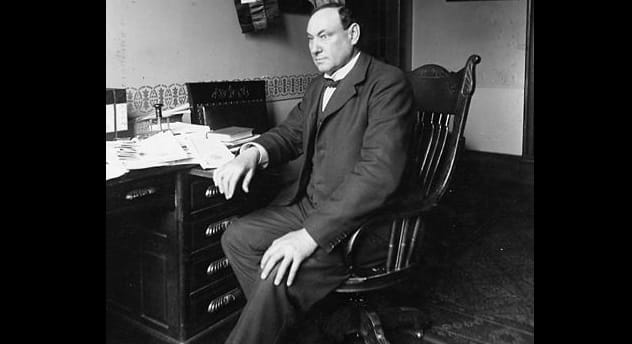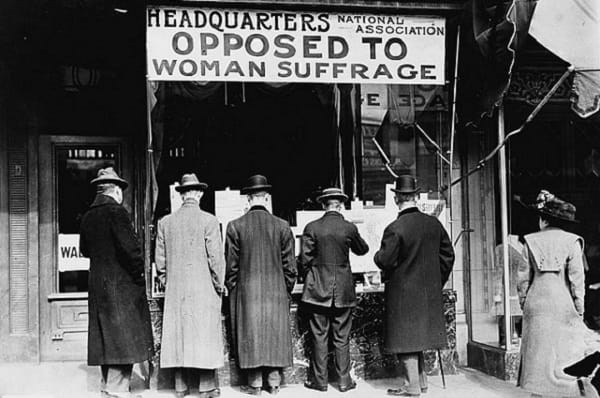Throughout history, people have sought belonging in various groups. While being part of something bigger than ourselves can be comforting, not all groups are created equal. Some historical clubs were united by experiences, afflictions, or beliefs that might make you grateful you weren’t a member. Let’s dive into ten such groups.
The Poison Squad

Today, the Food and Drug Administration (FDA) heavily regulates food, drinks, supplements, and drugs in the United States to protect public health. This is largely thanks to Harvey Washington Wiley, a chemist who championed the Pure Food and Drug Act of 1906, which led to the FDA’s creation. Wiley even served as its first commissioner.
Before that, Wiley worked for the US Department of Agriculture. He conducted a five-year experiment to test the safety of food additives, using 12 male volunteers (due to Wiley’s belief that women couldn’t handle the science). These men agreed to a strict regimen and waived their right to sue the government for any health issues they might face.
Wiley called his project the “hygienic table trials,” but the Washington Post dubbed the group the Poison Squad. Each day, the volunteers consumed meals laced with chemicals like borax, formaldehyde, and sulfuric acid. They underwent regular checkups and provided samples of urine, hair, sweat, and stool. Unsurprisingly, they often got sick. However, the uproar from their experiences led to the establishment of a governing body to regulate food products.
The Ejection Tie Club

In 1934, engineer James Martin and Captain Valentine Baker founded the Martin-Baker Aircraft Company, specializing in aviation safety equipment. Seeing a need for ejection systems after World War II, they developed ejection seats. Since their first live test in 1946, Martin-Baker ejection seats have saved over 7,000 lives.
To honor this achievement, the company created the Ejection Tie Club. Lifetime membership is granted to anyone who ejects from an aircraft using a Martin-Baker ejection seat and survives. The first member was an RAF pilot who ejected over Rhodesia in 1957. Today, the club boasts over 5,800 members, though details are scarce due to many members being active military personnel.
In addition to bragging rights, members receive a certificate, membership card, patch, pin (or brooch), and a signature tie to wear when not in uniform. Despite the benefits, pilots aren’t eager to join. Ejecting from a plane is a rough experience, often feeling like a powerful punch to the chest and risking neck, leg, or spinal injuries.
The Shuttlecock Club
Skeleton is a winter sport where athletes sled down a frozen track, face down, at speeds over 130 kilometers (80 miles) per hour. Derived from sledding on the Cresta Run in St. Moritz, Switzerland, skeleton differs from bobsleigh or luge because athletes steer using their head and shoulders.
The Cresta Run, built in 1884 by the St. Moritz Tobogganing Club (SMTC), was among the first to recognize the speed advantage of headfirst sledding. Cresta sledding uses rakes attached to the feet for steering. Today, it’s one of the few tracks dedicated solely to skeleton and is closed to women.
The Cresta Run features a treacherous corner called the Shuttlecock. This long, sweeping left-hand bank is designed to slow riders down. Those who fail to navigate it properly risk falling off the track, earning automatic membership in the Shuttlecock Club. Members receive a special tie and can attend a members-only annual dinner. The fall-to-ride ratio at the Shuttlecock is about 1:12, though higher for beginners.
The National Association Opposed To Woman Suffrage

The National Association Opposed to Woman Suffrage (NAOWS) fought against the women’s suffrage movement. What made this organization unique was that it was founded by a woman.
Josephine Dodge, from an elite New York family, had opposed suffrage for decades before starting the NAOWS in 1911. She found many female activists who believed women should stay out of politics. These anti-suffragettes often came from wealthy families who feared suffrage would disrupt the status quo. In the South, plantation owners supported the NAOWS, fearing that rights for women would extend to minorities.
To appeal to the working class, the NAOWS argued that suffrage threatened femininity and motherhood. They claimed politics was a dirty business, and female involvement would lead to the loss of womanhood’s privileges and threaten her role as a mother. Similar groups existed, such as the Women’s National Anti-Suffrage League in the UK, which at its peak had over 100 branches.
Home, Washington

In 1895, three anarchists set out to find the perfect location for their idyllic community along the Puget Sound. They established Home, Washington, and formed the Mutual Home Colony Association to promote their anarchist philosophy.
Home attracted notable figures like writer Elbert Hubbard and anarchist Emma Goldman, along with other social outcasts who enjoyed the freedoms offered. Initially ignored by outsiders, the town faced suspicion after President William McKinley’s assassination by anarchist Leon Czolgosz. Local newspapers in Tacoma depicted the town as a place of scandalous debauchery, and vigilante groups occasionally targeted the residents.
Internal conflict over skinny-dipping ultimately led to the Association’s dissolution in 1919. The town split into “nudes” and “prudes,” and the community couldn’t overcome the divide.
The Pollywogs

A pollywog is a sailor who hasn’t crossed the equator. This term originated when crossing the equator posed significant danger. Upon their first crossing, a sailor was upgraded to a shellback after undergoing the ceremony of Crossing the Line.
This tradition, observed by many seafaring civilizations for centuries, has evolved over time. Originally, it involved brutal hazing, with pollywogs beaten, whipped, and thrown overboard. However, it mostly became a celebratory event aimed at boosting morale and proving a shellback’s seaworthiness.
Pollywogs are summoned before King Neptune, played by senior shellbacks, who entertain the royal court with an impromptu talent show. The pollywogs then endure various “punishments,” such as crawling through something unpleasant or wearing silly costumes. One key ritual involves “kissing the royal belly,” where a senior officer dressed as the royal baby—sometimes covered in grease—has pollywogs kiss their belly. Passing this initiation earns them the title of Sons (or Daughters) of Neptune. Even Charles Darwin was initiated aboard the Beagle, where he was shaved with pitch and paint and dunked in water.
The Flat Hat Club

Established in 1750 at the College of William and Mary in Williamsburg, Virginia, the Flat Hat Club, officially known as the FHC Society (“fraternitas, humanitas, et cognito”), was one of the earliest collegiate societies in the United States. It was named after the mortarboard caps worn at the college.
Lasting only a few decades, the club ceased activities in 1781 during the American Revolution due to a lack of structure and goals. Thomas Jefferson, its most famous member, considered the society pointless and wasn’t sure if it still existed, as there was little incentive for members to stay connected after graduation.
The club sealed its fate in 1776 by rejecting law student John Heath, who then founded Phi Beta Kappa, the first Greek-letter fraternity in the US. The Flat Hat Club disappeared, while Phi Beta Kappa remains the oldest active honor society in America.
The Jumping Frenchmen Of Maine

The Jumping Frenchmen of Maine were a group of 19th-century lumberjacks (and relatives) who displayed extreme startle reflexes. They would jump or make uncontrollable, exaggerated movements when surprised by sudden noises or physical contact.
American neurologist George M. Beard studied these individuals, concentrated in the Moosehead Lake region of northern Maine and parts of Quebec. Beard observed them for nearly two years and presented his findings in 1880. His paper, “Experiments with the Jumpers or Jumping Frenchmen of Maine,” examined 50 cases, noting the condition began in childhood and was rare in women.
In extreme cases, people would immediately follow commands, even if it meant harming someone. They sometimes exhibited echolalia or echopraxia, imitating others’ words or movements.
Due to limited documented cases, medical professionals struggled to classify the illness. While Beard saw it as an extreme startle reflex, others suggested it was a culture-bound syndrome. George Gilles de la Tourette considered it a type of “convulsive tic illness,” now known as Tourette’s syndrome.
The Mad Travelers

Dromomania is a psychological condition characterized by an uncontrollable urge to travel. While similar to wanderlust, dromomania involves a compulsion where patients may travel against their will or without remembering the experience.
Dromomania became popular in late 19th-century France after a case presented by a student named Philippe Tissie in 1887 in his paper called “Les Alienes Voyageurs” (“The Mad Travelers”).
Tissie presented the case of Jean-Albert Dadas, a gas fitter who deserted the army in 1881 and traveled the world, later claiming to remember little of his adventures. Dadas traveled to Prague, Berlin, and Moscow, where he was mistaken for a member of a nihilist group that assassinated the tsar. He was imprisoned and then exiled to Turkey, traveling to Constantinople and Vienna before returning to France.
Following Tissie’s paper, Europe saw an increase in dromomania cases, although its role as a trigger is uncertain. French neurologist Jean-Martin Charcot believed dromomania was caused by latent epilepsy, while others attributed it to hysteria. Interest in the Mad Travelers waned by 1910.
The Halfway To Hell Club
During the Great Depression, jobs were scarce, and people took any work they could find. Despite the economy, San Francisco began constructing the Golden Gate Bridge. Due to many inexperienced ironworkers (farmers, cab drivers, stevedores, clerks, and lumberjacks who misrepresented their qualifications), accidents were common.
Chief engineer Joseph Strauss prioritized worker safety, instituting policies like mandatory hard hats and firing anyone caught drinking. He installed a $130,000 net under the bridge, a new safety feature that saved 19 men.
These survivors became known as the “Halfway to Hell Club.” Workers were so enthusiastic about the net, they had to be stopped from jumping into it on purpose.
Which of these groups do you find the most bizarre? Leave your comment below!










